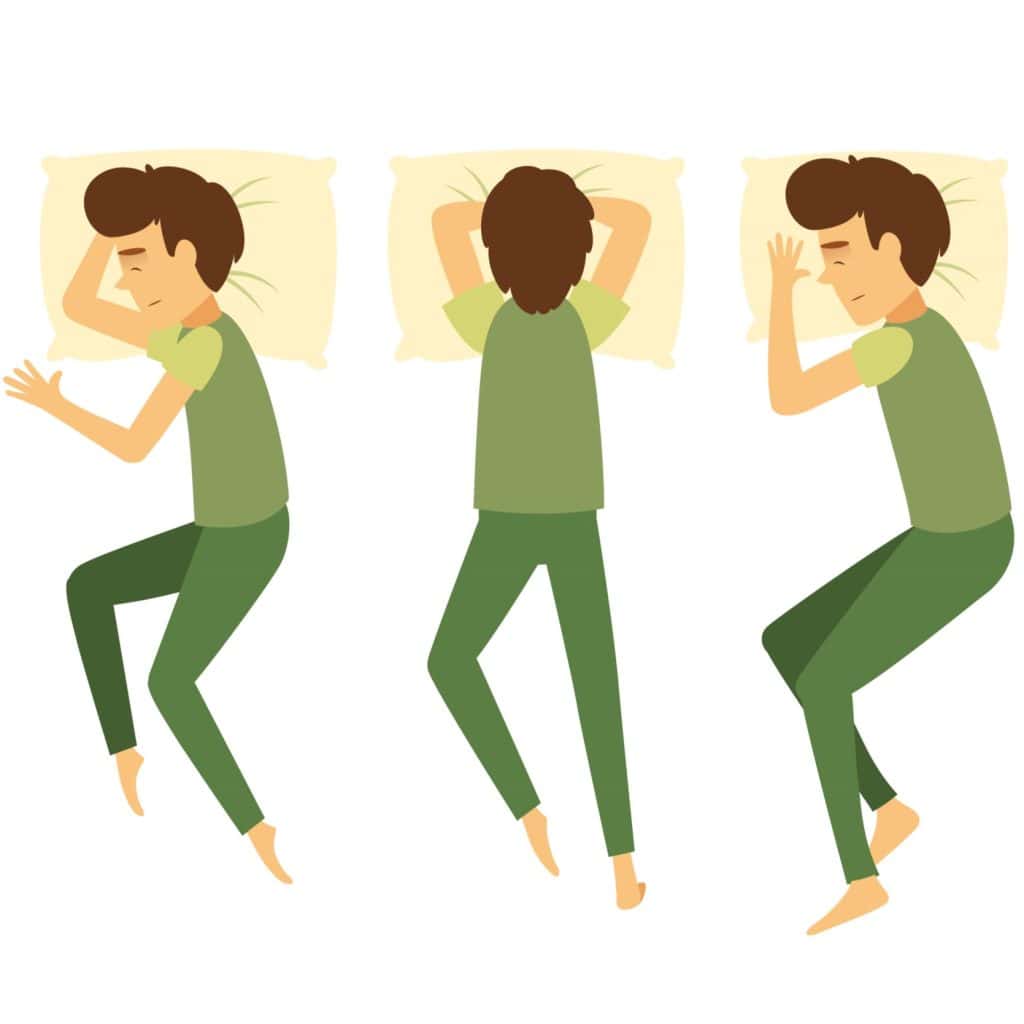Bedding / Sleep Advice
Effective Bedtime Strategies to Alleviate Sciatica Pain
Sciatica can turn a restful night’s sleep into a morning nightmare. It affects many people and is characterized by pain that radiates down the sciatic nerve and extends from the lower back to the legs. Thus, finding effective strategies to manage this pain at bedtime is crucial to maintaining overall health and well-being. From the best sleeping positions and where to place your pillow to the importance of buying the right mattress, this article will uncover various techniques to help you manage sciatic pain at night.
Understanding Sciatica

Sciatica is most often caused by the nerve being irritated or compressed. This is most commonly caused by a bulging disc, narrowing of the spine, or a condition where the piriformis muscle (which runs from your lower back to the top of your thighs) compresses or irritates the nerve. Typically, sciatic pain begins in the lower back and extends down one or even both legs. Some people describe sciatica as a mild ache, while others say it is a sharp, burning sensation. The intensity of pain can vary and cause a tingling sensation, numbness, or muscle weakness along the area that follows the nerve from the lower back to the legs.
For most people, sciatic pain is worse at night. This could be due to several factors, including your sleeping position, inadequate mattress support, or the natural tendency of the back muscles to tighten up during sleep. Understanding the origins and what it means to experience sciatica is the first step in effectively managing its symptoms when you head to bed.
Bedtime Positions to Ease Sciatic Pain

It’s important to sleep in the right position to ease sciatic pain. To evenly distribute your weight, most experts recommend sleeping on your back is generally recommended. To make yourself comfortable, you can put a pillow under your knees to help maintain the spine’s natural curve. For those who like to sleep on their side sleepers, it’s best to draw your knees toward your chest and place a pillow between them to provide relief and reduce the strain on the sciatic nerve. Placing a pillow between your knees also prevents the spine from twisting while you sleep.
On the other hand, most experts don’t recommend sleeping on your stomach if you suffer from sciatica, as it can place undue stress on the back and neck. If you find it hard to use another sleeping position, placing a thin pillow under the hips can help minimize any sciatic strain. Trying out different positions and using pillows strategically can significantly reduce sciatica and improve the quality of your sleep.
The Role of Pillow Placement for Sciatica Relief
As mentioned in the previous paragraph, pillow placement plays a critical role in alleviating sciatica pain. A pillow under the lower back or knees helps back sleepers maintain spinal alignment and reduces nerve pressure. By adding this pillow, you’re creating a slight elevation that helps naturally mimic the curvature of the spine and ease the tension on the sciatic nerve. For those who like to sleep on their side, a firm pillow between the knees helps stop the upper part of your leg from pulling the spine out of alignment and aggravating the sciatic nerve.
Your choice of head pillow is equally important. Your pillow should be the right height to align your neck with the rest of the spine. The wrong pillow can tilt your head out of place, which can worsen sciatica pain and make it hard to sleep comfortably. Choosing the right pillow and using it the right way is an important step in managing sciatica and getting a good night’s rest.
The Importance of Your Mattress in Sciatica Care
The type of mattress you sleep on can significantly impact the sciatica symptoms you experience. If your mattress is too soft, it may cause your body to sink, meaning that your spine isn’t aligned properly. On the other hand, a mattress that is too firm can, conversely, increase the pressure on the sciatic nerve. The perfect mattress for people who suffer from sciatica should provide both support and comfort. Most experts recommend a medium-firm mattress to maintain proper posture and distribute your body weight evenly, reducing the stress on your spine and sciatic nerve.
Over time, your mattress will become less supportive, which means that checking it regularly is important. Replacing it every seven to ten years or when you notice a large dent where you sleep as it sags is vital for your spinal health. If you’re not quite ready to buy a new mattress yet but have noticed that your bed is less comfortable, a mattress topper might be your best bet.
Relaxation Techniques Before Bedtime

Relaxation techniques can help you fall asleep more easily, but in addition to helping you fall asleep more easily, they can also help you manage sciatica pain. Gentle yoga stretches can loosen tight muscles and reduce pressure on the sciatic nerve—child’s pose or the knee-to-chest stretch is particularly helpful. In addition to yoga, mindfulness provides a mental distraction from pain and helps reduce stress. Try a guided meditation before bed.
Another effective technique is applying heat or cold therapy to the area before bed. A warm bath or a heating pad can ease muscle tension, which will help with sciatica pain. Alternatively, a cold compress can help reduce inflammation and numb deeper pain for acute flare-ups. When combined with the right sleep environment, these techniques can significantly enhance your sleep quality if you suffer from sciatica.
When to Seek Professional Help for Sciatica
While many cases of sciatica can be managed at home, if your symptoms continue or the pain worsens, you should contact your doctor. Beyond this, experts recommend getting immediate medical attention if you experience any symptoms like weakness in the legs or sudden, severe pain.
Professionals like physiotherapists can create tailored exercise plans and therapies to target the root cause of your sciatica. In severe cases, surgery may be required to relieve the compressed nerve. Regular communication with your doctor or physio will ensure you manage your sciatica as safely and effectively as possible.
As sciatica tends to flare at night, learning how to manage sciatica pain at bedtime may require you to re-evaluate your sleeping position, pillow placement, and the relaxation techniques you use. Understanding the different factors that contribute to sciatica pain and implementing changes can significantly improve your sleep and overall quality of life. Ultimately, gaining control of sciatica at night is not just about reducing the pain but also ensuring you get a good night’s sleep so you can function well the next day.

